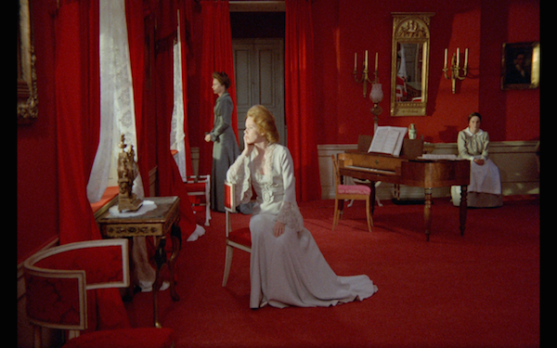This Is Not a Burial, It’s a Resurrection is not your typical film. It’s pretty slow paced and full of carefully crafted shots, reminiscent of director Lemohang Jeremiah Mosese’s debut, Mother I Am Suffocating. This is My Last Film About You. However, unlike his debut documentary feature, This Is Not a Burial, Its a Resurrection is Mosese’s first fictional feature film. But don’t expect an easy to follow narrative, as like a Lav Diaz film (see From What is Before), it requires a lot of interpretation. If you put in the effort, you’ll be rewarded with a beautiful constructed film touching on a wide range of themes covering death, community, progress, and the environment.
This Is Not a Burial, Its a Resurrection starts chaotically with a slow motion shot of a group of horses being attacked by tribesmen. This opening shot doesn’t appear to serve any contextual purpose, as the horses or tribesmen never reappear later in the film, but it does create a sense of uneasiness which prevents us from settling into the film. This feeling continues into the next scene in which a camera slowly pans around a dark empty bar with the eerie sounds of a lesiba instrument playing in the background. The cameras stops on a uniquely dressed man who starts giving us clues about what we are about to see. He doesn’t reveal much, as he uses a lot of legends and proverbs which don’t mean much to us at this point, but his speech indicates that we’ll have to be an active viewer and search for deeper meaning in the rest of the film.
We finally meet our main protagonist Mantoa in the next scene. She’s an eighty-something woman living alone in remote valley in Lesotho, which is a days trip from the nearest town. Her last son has passed away, so she’s now the last one left in her family. As a result, all she craves now is her own death, so she sets about planning her own funeral. Until her time comes, she carries on with the futility of her life, attending local community meetings and covering cracks in her mud floor. However, her patience is disrupted by news that the local government are planning to flood the area with the construction of a big dam. Not only does the dam disrupt the plans for her own burial, but it will also force the relocation of her buried family. As the main figure leading the resistance against the dam, she becomes more and more distanced from her community and religion. Her death isn’t a physical one, but a death from her community and cultural roots as the country ruthlessly pushes forward in the name of progress.
The narrative is sparse, but the look and feel of the film is incredibly rich. One way Mosese adds a unique richness is through his use of a taller 1:33:1 aspect ratio which gives the picture slightly more height. The extra vertical space allows the sky to dominate every image by taking up almost half of the screen for each landscape shot. In contrast, the people in the community are largely confined to the bottom third of each landscape shot. This framing adds power to the sky and nature, and diminishes the significance of the people below. Their lives and the things they do, such as building dams, are impermanent compared to the eternal nature of the sky (and heaven?). The taller aspect ratio therefore enforces the futility of not just Mantoa, but the futility of humanity as a whole.
The futility of humanity is enforced by the feeling generated by the films’ soundtrack. Firstly, listen to the trailer for this film without watching it. It sounds like a horror film. There’s the unique muffled bursts of the lesiba combined with a horror 101 mix of piano notes, scratchy strings, and ascending voices. This soundscape plays throughout the film to viscerally convey the confusion, anger, and sadness that Mantoa feels on her quest to join her dead family. But the sounds used in horror films also signifies the presence of the spiritual realm. Just as the taller aspect ratio gives more power to the sky and nature at the expense of the significance of humanity, the soundtrack bolsters the dominance of the spiritual over the physical human bodies. It reminds us that we’re not in control of our own fate.
The unsettling opening, sparse narrative, and rich look and feel of the film make This is Not a Burial, It’s a Resurrection feel enigmatic. By the end, it feels like you’ve just watched a piece of art. You might have understood a bit of the film and felt its power and beauty, but you will finish it feeling that it’s full meaning is unattainable. It’s mystery is the mystery of life.




